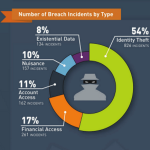
This is a recent Retirement Income Planning case in which we weighed the pros and cons of a Systematic Portfolio Withdrawal Strategy and an Income Flooring Strategy for a client.
Here are Case Parameters:
Client – Jane Doe; Age 62; Female; Divorced
Income: $85,000; Self-employed professional; and plans on working until Age 70
Social Security Claiming Strategy: Will defer her Social Security to age 70; taking Spousal Benefit at Age 66
$300k – Traditional IRA
$100k – Roth IRA
$64k – Deferred Fixed Annuity Balance with a guaranteed 4% interest rate.
$100k – Cash / Savings
Monthly Discretionary Income ≈ $2,000 (spousal support payment amount)
These are the goals Jane wants to accomplish:
- Retirement at Age 70 with a total Monthly Income of $5,000 per month, adjusting for inflation. This would require approximately $6,100 each month by age 70.
- Address future Long Term Health Care needs. Jane doesn’t want to buy a traditional LTC Policy, but would consider repositioning some of her IRA’s for potential LTC benefits.
- Jane wants to maintain an inflation adjusted income for her lifetime and wants to plan for a time horizon of age 95. She has a family history of longevity and wants to plan accordingly.
- Keep enough Cash for any emergencies or whims.
- Apply $1,500 of her Monthly Discretionary Income to a combination of a SEP-IRA and a new Roth IRA. Jane isn’t ready to commit this monthly amount (but easily could). If she did save this amount through retirement at age 70, there would be another $150k+ of assets at her disposal. Until this savings habit begins we will not use it in our projections.
Here’s what we did to address Future Long Term Care Needs and Liquidity:
- Roth IRA – $100k; Position for Home Care or Long Term Care in either:
a. Fixed Index Annuity with an Income Rider that doubles for Home Care or Confined Care
b. Keep in an Investment Portfolio and dedicate this account for future LTC needs.
The Roth IRA payouts will always be tax-free, no required age for beginning distributions.
2. Cash / Savings – $100k. Leave $50k in Cash; Invest $50k over the next 2 years into Index ETF’s.
Jane will most likely buy a new car and/or put a down payment on a home within 5 years. This is where she’ll be able to get those funds.
These arrangements took $200k off the planning table, leaving only the Traditional IRA balance of $300,000 to apply for the future income requirements.
Jane has to begin Required Minimum Distributions at age 70 ½, this coincides with her planned retirement date and beginning her deferred Social Security benefits.
After totaling Jane’s expected income from Social Security and assuming a 5 year payout from her existing Deferred Annuity, we determined that from age 70 thru 75 she would need to withdraw $17,500 each year from the IRA. The Cash and Investment balances are available if needed.
At Jane’s age 76 – The Deferred Annuity payout has ended, the annual required income withdrawal now becomes $38,000, adjusting at 3% annually for inflation.
The two ways we analyzed the lifetime sustainability of this $300,000 portfolio were the Systematic Withdrawal and Income Flooring methods.
The Systematic Withdrawal method involves taking the entire amount and investing in a diversified portfolio of stocks and bonds and withdrawing each year a specific dollar amount or percentage of assets. The annual withdrawals would increase each year by your assumed rate of inflation.
The Income Flooring method takes the approach of determining how much investment is needed to buy the desired amount of future income. This sets the income base to a level at which it can never fall below. This is typically done with Treasury Inflation Protected Securities (TIPS), bond ladders, or Annuities with Lifetime Income Riders.
The Results:
- Systematic Withdrawal – Assuming the $300k were invested today throughout retirement in a 60% Stock 40 % Bond Portfolio. We performed Monte Carlo simulations which puts the portfolios through 1,000 random scenarios to test the probability of lifetime success. We began withdrawals of $17,500 per year from age 70 – 75. We increased income to $38,000 at age 76 throughout life expectancy, adjusting by 3% annually (our CPI inflation assumption).
- There was a 0% probability of success that the portfolio would last Jane’s lifetime with her required rate of income. The median age at which the portfolio fails is 82.
- Increasing the portfolio’s stock allocation to 80% boosted the long term return and success rate to 46%. The median age at which the portfolio fails is 86.
- For a success probability of 90% or more an initial investment portfolio of approximately $1,000,000 would be required. That’s nice, but we still only have $300k to work with.
Using an aggressive portfolio allocation for the $300,000 investment today, Jane has a 54% chance of fully depleting these funds by age 86. The more conservative allocation gave a 0% chance of success past age 82.
- Income Flooring – the $300,000 was not enough to buy TIPS or a bond ladder to get the required income. A Fixed Index Annuity was chosen that had a Lifetime Income Rider that provides an annual income increase based on the Consumer Price Index (CPI) inflation rate.
The annuity’s rate of return is based on whatever market indexing strategy is chosen. The annuity’s earnings in negative market periods will be $0. For this illustration the assumed return was 6.54% using a 30 year backcast.
- We took $17,500 per year for the first 5 years; this satisfies Jane’s Required Minimum distributions and doesn’t initiate using her Lifetime CPI Income Rider. Combined with her Social Security Jane’s income is $5,788 per month or $69,456 per year. Cash and other Investments are available for any shortfalls.
- At Age 76 we began her Lifetime Income Rider. This pays $3,129 per month. Combined with her Social Security this puts Jane’s income at $6,191 per month or $74,292 per year.
- Her income sources (Social Security and IRA) both get annual CPI-based increases throughout her lifetime. Her combined income at age 85 would be ≈ $7,368 per month or $88,416 per year.
The total beginning income amount using Income Flooring at age 70 ($5,788) is about $400 per month less than Jane’s desired beginning amount of $6,100. But she still has Cash, Investment, and Roth IRA balances to offset any shortfall.
The Fixed Index Annuity actually runs out of Account Value at Jane’s age 88, which is about her normal life expectancy. This means she has no account balance left to access. Because this is a Lifetime Income Rider, the issuing company is contractually obligated to continue paying income (with CPI increases) for Jane’s lifetime.
How the annuity continues paying income when it’s out of money is because Jane and all the other annuity holders of the issuing company are lumped together in an actuarial mortality pool. For every one that lives past life expectancy, there are many others that don’t. Thus the risk of the potential lifetime income payments is spread among the total pool of possibly millions of other people. And of course, the issuing company has to make a profit on this actuarial arbitrage, otherwise they wouldn’t offer these products.
The Systematic Withdrawal strategy would most likely be the one chosen if Jane had $1,000,000 or more that she could dedicate for this. It would allow greater access to her funds and more spending flexibility. But we’re beginning with $300,000 and we won’t hit her numbers with 300k.
For Jane, the choice of the Income Flooring strategy is going to be the most logical course. It eliminates the possibility of outliving her income and builds in inflation protection. The annuity company assumes the risk of Jane’s potential longevity.
For most people that have accumulated a modest nest egg, can’t stomach the possibility of running out of income or having to someday reduce their lifestyle, the Income Flooring strategy will usually provide for the greatest assurances of lifetime income.
My Company Website: www.thewoodvillegroupllc.com
Are YOU Ready to Retire?
Find out with this interactive quiz: https://www.ready-2-retire.me/WilliamTucker
Will YOU Get the Most From Social Security?
Get Free Social Security Reports here: www.wtucker.sswise.com









